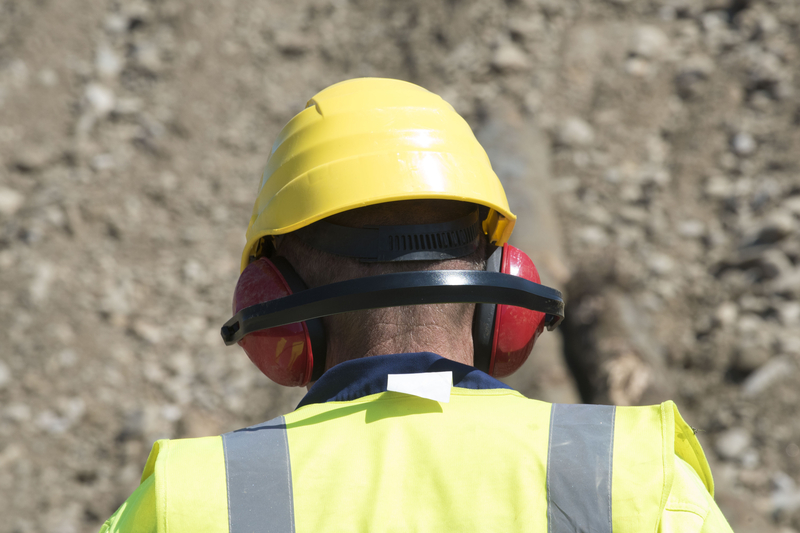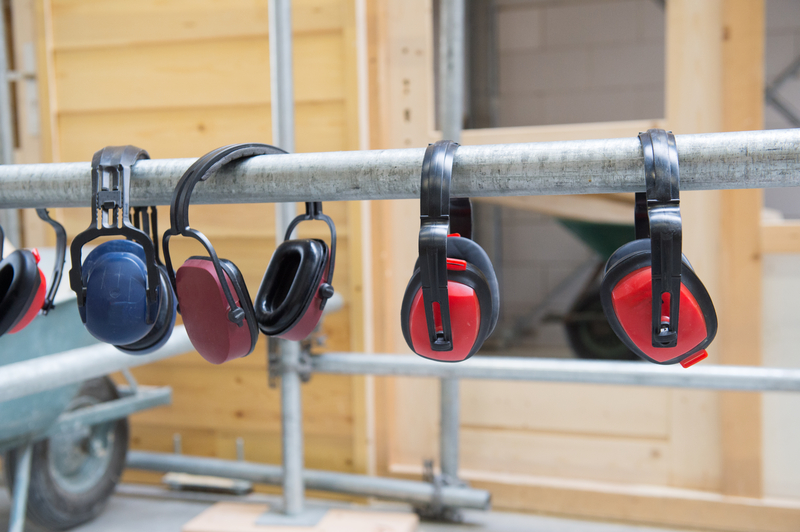
More than half of construction workers are exposed to hazardous noise. In National Tinnitus Week (7-13 February), Katie Ogden explains the dangers and offers tips on what more construction workers can do to protect their hearing.
Around 51% of construction workers are exposed to hazardous noise and 25% of noise-tested construction workers have a hearing impairment.
Activities such as digging, concrete pouring and angle grinding are particularly loud parts of the job which can cause severe damage to long-term hearing if workers do not protect their ears adequately,.
If workers are exposed to noise levels of 85dB, employers are responsible for providing hearing protection and hearing protection zones. For sound levels at 80dB an employer must carry out a risk assessment and provide information and training to workers.
High noise levels in a workplace can also interfere with communication between workers, leading to an increased risk of accidents, injury and even death.
Not only can heavy plant machinery, jigger picks, wacker plates etc have an impact on hearing, they can also cause further medical conditions such as hand arm vibration syndrome. This is why wearing the right personal protective equipment (PPE) is extremely important, with workers who refuse to do so putting themselves at risk of cuts and punctures, chemical burns, electric shocks and exposure to excessive noise or vibration.
The construction industry reports a high number of fatal injuries and accidents each year, with workers knowingly subjecting themselves to high-risk – and often hazardous – situations, which is why PPE is crucial.
Required PPE
Ear protection is particularly important for workers operating in loud environments.
Options available to protect ears include earplugs, earmuffs and semi-insert/canal caps. Ear PPE must provide a suitable level of protection for the work being undertaken, and all workers must be clear on how to wear their PPE correctly, to ensure maximum protection.
If workers have any concerns about the PPE they have been provided with, they should raise the issue with their employer.
Other general tips for construction workers to protect their hearing include:
Take everyday noise protection care
Whilst normal ear plugs bought from a supermarket can protect and block sound, high-quality industrial earplugs are much better to help protect your ears and ear drums.

“If workers are exposed to noise levels of 85dB, employers are responsible for providing hearing protection and hearing protection zones. For sound levels at 80dB an employer must carry out a risk assessment and provide information and training to workers.”
Industrial ear plugs are one of the best ways for you to protect hearing. They are small inserts that fit into your outer ear canal. They work by blocking the air canal with an airtight seal to block noise from entering your ears.
If you have trouble keeping them in your ears, you can even get earplugs that are fitted to a headband to ensure they are constantly blocking out noise.
Ear muffs/ear defenders are a slightly different option to earplugs as they sit on top of the ear rather than just blocking the canal.
By fitting over the entire outer ear, ear muffs can form an air seal to protect the ear canal and for those who struggle with ear plugs fitting, they are held in place by an adjustable band connecting the two muffs. To work best, the muffs will need to fit over the entire ear.
Never stick anything inside your ear canal
It’s important to choose a safe noise protection device that doesn’t go too far into your ear canal which can damage and lead to a perforated eardrum.
Similarly, to remove earwax the worst thing you can do is stick anything in your ears such as cotton swabs and other stick-like devices. As we say in clinic to our patients, “nothing smaller than your elbow should go into your ears unless advised by a healthcare professional”.
Not only could this damage your hearing (and I have seen damaged eardrums because of this and it’s painful!), it can injure the ear canal as the skin is very thin and blood vessels are situated very close to the surface. It is a highly counterproductive way of trying to clean your ears as it will usually create an uncomfortable build-up by pushing wax and debris further inside your ear canal.
The life cycle of ear wax, or ‘cerumen’, is that left alone it should usually make its own way out of the ear and it certainly doesn’t need a helping hand from cotton buds.
If you do suffer from wax build-ups the best thing is to have your ears examined and the wax professionally removed.
Avoid loud environments in general
You don’t have to be a jackhammer operator to experience hearing loss. While construction zones are an environment that can regularly put you at risk of hearing damage, it can also happen in any loud environments such as live music events, airports, and sports matches.
So when you are out of loud work environments, try giving your ears as much rest as possible, which means avoiding blasting loud music in your headphones on your way home from work.
It is important to know that many unions require construction workers to have their hearing tested multiple times each year, therefore protecting your ears and avoiding intense volumes will help in noise protection. In the UK if you do have any concerns you can also read up on the publicly available HSE regulations, in particular the Control of Noise at Work Regulations 2005 and the Noise at Work Regulations 1989.
If workers are concerned about their hearing, they can test their hearing using the ReSound online hearing test, allowing them to test whether their job has had an impact on their hearing over a long period of time.
Katie Ogden is an HCPC-registered hearing aid dispenser and the training manager of the ReSound











